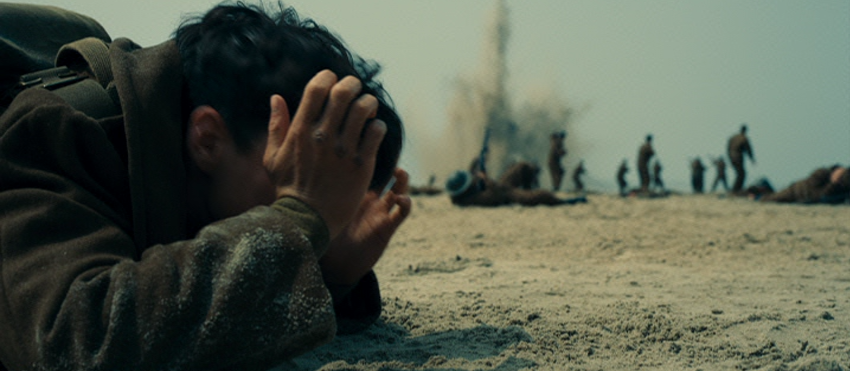
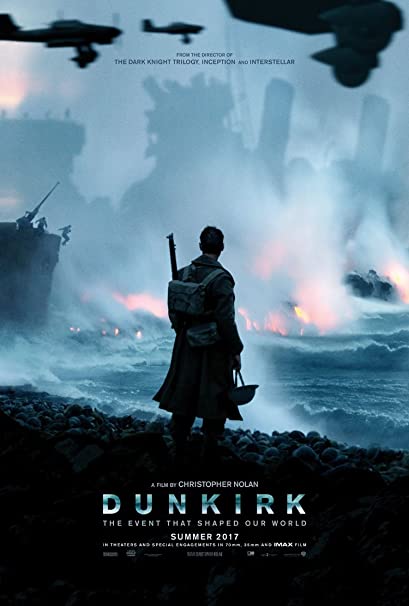
“We shall defend our island whatever the cost may be. We shall fight on the beaches. We shall fight on the landing grounds. We shall fight in the fields and in the streets. We shall fight in the hills. We shall never surrender.”
Dunkirk opens with a young man fleeing gunfire, and it remains a white-knuckle affair for its entire runtime. If you have any number of fears—claustrophobia; fears of darkness, flying, heights, or drowning; fear of being burned alive or shot—you are in for an excruciatingly intense viewing experience, complemented by Hans Zimmer’s eerie use of a Shepard tone.
The story is based on the evacuation of British military units from the city of Dunkirk during World War II. Surrounded by Nazi troops, more than 400,000 English, French, Polish, Belgian and Dutch soldiers stood on the beaches of Dunkirk waiting to die. The docks of Dunkirk were too damaged to utilize, but the mole—a sea wall that protects the harbor—was intact. Based on the limited number of troops that could be evacuated with the scant docking capabilities, the British Navy requisitioned numerous civilian seacraft to use as rescue vehicles as these boats could approach the beachfront shallows and the distance between Dunkirk and England was small enough for the vessels to traverse.
Director and writer Christopher Nolan chose a unique storytelling tactic to chronicle this episode of World War II. We are not given an overview of the situation. Instead we follow three different stories in three separate timelines. Tommy (Fionn Whitehead) is an inexperienced footsoldier trying to survive the destruction on the beach. Peter Dawson (Tom Glynn-Carney) and his father (Mark Rylance) are civilians sailing their private craft to the beaches of Dunkirk part of the rescue effort. Farrier (Tom Hardy) and Collins (Jack Lowdon) are fighter pilots. The story on the beach takes place over the course of one week, the story on the sea covers one day, and the story in the air lasts a mere hour.
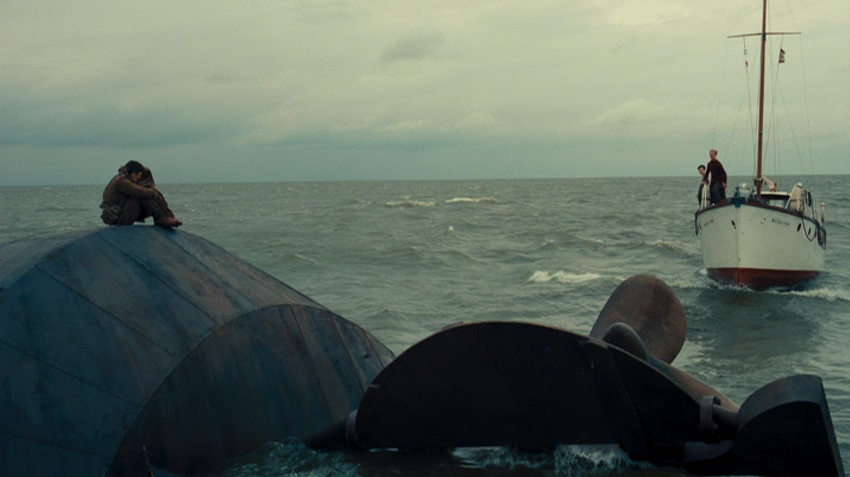
Another interesting storytelling decision was the on-screen absence of several elements that are key to the historical story that we know is unfolding. There are no Nazis, because these inexperienced soldiers only knew them by their bullets and their bombs. There is no Winston Churchhill because they had no way of knowing what sort of political decisions were dictating their fates. The story is about the war, of course, but it is really about the experience of the individuals on the frontlines who operated with incredibly limited knowledge, whose objective became not victory, but survival. Toward the end of the film, when the soldiers have been successfully evacuated, a blind man is handing out blankets to them, repeating to each one, “Well done, lads.” Alex (Harry Styles) replies disgustedly, “All we did is survive.” The blind man considers for a moment, then replies, “That’s enough.”
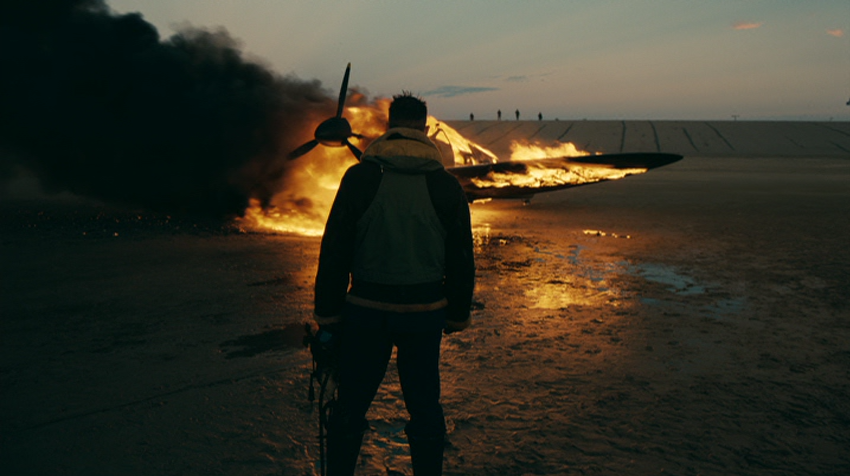
A summary of the plot would not do the film justice because on its surface the plot is fairly simple. It is the intricate weaving of three timelines of different durations into a cohesive feature length film that is the real achievement, and gives the film its cinematic scope. As he is wont to do, Nolan sacrifices some humanity in service of his contrived plotting, but there are still a sufficient number of evocative scenes. For instance, as the film approaches its conclusion, Farrier uses the last of his fuel to gun down a hostile aircraft, knowing that he will have to land in enemy territory but that his sacrifice will save thousands of lives. Cheers erupt from the ground as the footsoldiers’ unexpected savior sedately glides over the beach where they are congregated. While a surface reading of the scene is poignant on its own merits, it serves also as a broader allegory for the sacrifice of war.
Christopher Nolan reportedly knew that he wanted to make this movie over twenty years prior to its release. He focused on developing adequate experience to tackle such a large project, and in the process became one of the most highly-regarded and popular directors in the world. Starting his career with the unassuming and low budget Following, Nolan went on to helm films of ever increasing scope, including The Dark Knight Trilogy, Inception, and Interstellar. The care and craftsmanship that Nolan brings to the film is evident in the coordinated action scenes, the dearth of invasive CGI, and the tight narrative. Nolan’s films have always been playful with the concept of time, and it was interesting to see the different paces of the stories coalesce into a complete narrative.
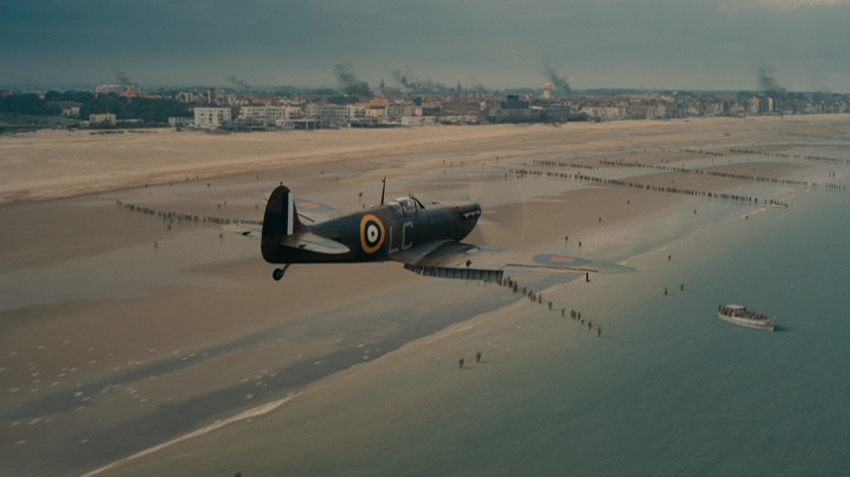
Dunkirk is made with undeniable skill and competency. My only gripes are not with Nolan’s execution, but with some of his stylistic and narrative choices. By anonymizing the characters relentlessly purusing dangerous situations, there’s little room for anything more than an instinctive reaction to the proceedings unless one brings in some background knowledge of the situation. The contrived timelines and handheld camerawork sustain the film’s intensity, but they are also occasionally disorienting and sap some of the majesty that one can glimpse in certain still frames. While the non-stop edge-of-your-seat tension was a bit much for my tastes, Nolan’s obvious respect for the subject matter and the combined talent involved in this film are undeniable.